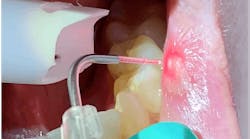Improving communication strategies in the dental practice is an ongoing and ever-developing process. Even the most efficiently run practices have room to grow when it comes to how they communicate internally. Here are a few tips to help you fine tune the way you and your staff interact.
Make sure you’re well prepared for the morning huddle
It’s vital that everyone on your team is on the same page before the business day starts. Don’t attend the morning huddle unprepared. Know who your patients are, what they’re going to need, specific concerns that you’re sure to have to address during the day, and how you want your staff to handle these concerns when they arise. This extra preparation will prevent unnecessary back-and-forth time for all staff throughout the day.
Without a morning huddle, it’s nearly impossible to make sure the entire team is on board and aware of unique patient situations that are expected during their appointments. As a result, patients tend to feel that no one knows what’s going on because their providers have not been made aware of their concerns, even if they’ve specifically asked and mentioned these concerns to someone on the team. Better communication means better patient care.
Practice active listening
Paying attention to what someone is saying is hard to do when you’re thinking about what you want to say when they stop talking. When your mind is focused on the words you’re putting together, you can’t fully comprehend what the other person is trying to communicate.
This is where active listening comes into play. This involves focusing on what the other person is saying and getting a feel for his or her attitude, beliefs, frustrations, and goals as you soak up that message. Your eyes should be focused on the person’s face, so don’t interrupt, and interact with the person (even if it’s as simple as a nod) appropriately to what is being said.
Verbalize the other person’s message back to them
Others can recognize when you’re truly devoted to listening to them when you’re able to repeat the person’s needs and concerns back to them after they’ve communicated with you. This is only possible if you’re practicing active listening.
In return, active listeners are able to reply with a better understanding of what the other person said. Verbally recognizing their concerns and needs as part of your response shows that you’re fully focused and respect them, either as part of the team or as the patient.
Repeating the concerns back to your staff or patient shows you respect and value what they have to say, which impacts overall office rapport. This also helps to prepare your team members with responses as they discuss specific concerns with the patients at hand.
For example, Cathy, your hygiene scheduler, just informed you that Mrs. Jones refuses to make an appointment on a day separate day from her children, even though she tends to no-show and leave gaping openings in the schedule. Mrs. Jones is upset with Cathy, and Cathy is upset because she’s only been scheduling for two weeks and isn’t sure how to handle the situation. As you listen to Cathy’s concerns and verbalize them in your response to her, it eases her mind and gives her the tools she needs to pass the message along to the patient.
Focus on patient hand-offs
When your patients see the office staff communicating in a comprehensive and effective manner, they tend to feel better taken care of, because they are! There’s a difference in the assistant walking Mr. Jones up to the desk and handing the chart to the receptionist and saying goodbye than there is with a prepared script of “handing off” Mr. Jones to the receptionist and the assistant reemphasizes the need for his treatment as she explains it to her peer. While the communication appears as if it is between fellow staff members, it’s pulling double-duty as the patient witnesses the process unfold.
Simple hacks to get you started
Sometimes, the old-fashioned way of communication works best. Sticky notes are great ways to communicate information about specific patients without interrupting other staff or disclosing personal information in front of other patients. But there’s also a way to implement this process without paper. Today, most dental office management programs (or third party apps such as Slack) make it easy to chat between operators, offices, and the front desk. When you need to alert the hygienist of her next patient arriving, or give the front desk a head’s up without leaving your seat, a few strokes of the keyboard are all that you need! If your current software doesn’t offer these capabilities, consider upgrading or downloading a separate app that can integrate with your current operating system.
Dental offices that great communicators tend to have staff members who feel respected, patients who feel well cared for, and schedules that run efficiently. How we listen and speak to one another is something that requires constant attention and improvement if we expect to be successful in our careers and overall practice management.
ALSO BY HEATHER COLICCHIO
Motivating your dental team
Handling dental patient cancellations and no-shows
Dental practice scheduling essentials







